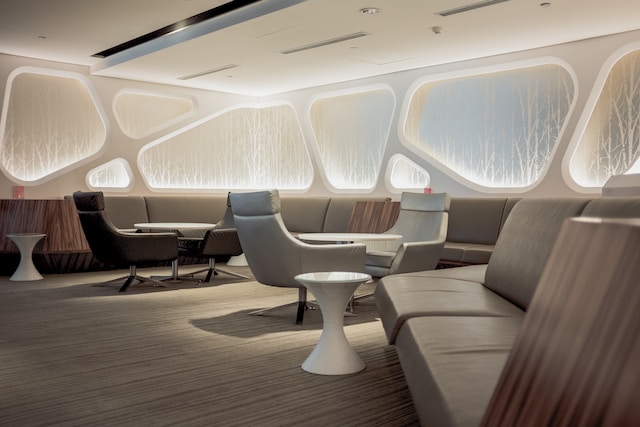As communities grow more diverse, public spaces should evolve to welcome all people regardless of age, race, gender, or ability. Inclusive design considers how facilities, parks, buildings, and infrastructure best serve populations with varying needs. Embracing inclusivity in public space planning means communities craft accessible gathering places benefiting society broadly.
Promoting Accessibility
Inclusive public sites incorporate a spectrum of thoughtful accommodations, allowing those with disabilities to fully utilize amenities without obstacles or stigma. Examples include graded curb ramps at numerous corner access points, wide automatic doorways with push button or hands-free entry, high-contrast tactile walking surface indicators, braille and written signage at standard heights, accessible water fountains, assistive listening devices, and gradual slopes allowing seamless navigation by wheelchair users or those with mobility limitations. High contrast visual markings, tactile paving, audible traffic signals with vibro-tactile pedestrian push buttons, amplified sound tours, and wheelchair/scooter chargers further aid those with vision or hearing loss to freely access sites.
Providing some height-adjustable elements like sinks, mirrors, interactive museum exhibits, gardening plots, park fitness equipment, and drinking fountains accommodates people of all heights including seated individuals, small stature adults, and ambulatory children. Having ample resting areas with arm/back supports thoughtfully sited at shorter intervals assists elderly individuals, pregnant people, those managing chronic health conditions, or any visitor traversing longer distances across parks and civic sites. Factoring diverse needs into accessibility plans from the start means public spaces can authentically welcome users of all physical abilities.
Representing Diversity
Public art, monuments and imagery should reflect the diversity of cultures, identities, and experiences within the community. For instance, sculpture gardens could intermix classical works alongside modern pieces from minority artists. Portraiture signifying accomplishments of both men and women promotes gender inclusiveness. Images conveying people of different ages and races foster a sense of belonging for viewers rarely represented in the public sphere historically. Using male and female toilet door signs with silhouettes promotes non-binary inclusion. Thoughtfully showcasing diversity makes public spaces resonate more positively with multicultural users.
Accommodating Family Needs
Welcoming public facilities meet distinct family needs to encourage their active participation. Highchair seating, baby changing stations, and small restroom stalls allow caregivers room when accompanying infants or young children. Play zones containing climbers, splash pads, sandbox pits or miniature zip lines help kids blow off steam during prolonged outings. Shady nursing nooks provide discreet, comfortable areas for breastfeeding mothers. Wider parking spots accommodate loading strollers or car seats necessary when families travel together, and outdoor facilities like parks or plazas might also incorporate convenient access points to restrooms and drinking fountains. This helps to minimize disruption when nature calls! By factoring family requirements into design, public spaces foster engagement across generations.
Promoting Safety
Inclusive public spaces apply principles of Crime Prevention Through Environmental Design (CPTED) optimizing actual and perceived safety. Adequate lighting, transparent sightlines, and lack of isolated alcoves prevents criminal behavior within larger facilities like transit centers. Separate vehicular and pedestrian circulation routes increase safety near roadways. Native, non-poisonous plants chosen along trails deter dangerous interactions with flora. Sophisticated camera systems, security patrols and responsive reporting procedures boost comfort for those more vulnerable to victimization. Regular safety reviews pinpoint any problem zones to address promptly. Prioritizing user wellbeing ensures inclusive public spaces remain secure, welcoming everyone confidently.
Encouraging Community Connections
Great public spaces ultimately function as “third spaces” facilitating positive community interactions outside home or work environments. Flexible lawn expanses, performance stages and pavilions allow the hosting of cultural festivals, drawing together diverse crowds. Chess tables, bocce ball courts and exercise stations encourage friendly competition and mingling between users of all backgrounds. Interactive artworks like giant xylophones or language translation stations inspire human connections through shared discovery. Cooking classes within park conservatories could bridge divides across generations and traditions. Thoughtful programming and amenities help to foster the social fabric binding communities. Inclusive places open doors for unity.
Adopting Universal Design
The ultimate manifestation of inclusive spaces incorporates universal design making them innately accessible to all without noticeable accommodations shouting difference. For example, a universally designed playground integrates ground-level elements alongside elevated structures, allowing every child to participate fully in their own way. Ramps seamlessly integrate near any stairs. Textured ground surfaces guide cane users subtly through plazas without need for guardrails telegraphing impairment. Building architecture styled consistently from exterior to interior makes all users feel welcome versus segregated accessibility vestibules. Pursuing universal design may cost marginally more upfront but pays endless dividends strengthening communal ties long-term.
Conclusion
Truly inclusive public spaces represent the epitome of ethical, equitable design benefiting humanity at large. They reinforce every person’s value while empowering participation they deserve. Crafting welcoming places ultimately enriches the urban fabric binding diverse communities together. This elevates society maximizing potentials of all members based on their shared humanity rather than differences. While progress expands every day, conscious inclusion efforts must persist until the built environment provides not just accessibility but also dignity to all groups. This guiding light shows our best path ahead.

